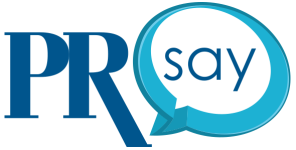Join Matisse Hamel-Nelis and PRSA on Sept. 30 and Oct. 1 for comprehensive accessibility training designed specifically for communications professionals working with ADA Title II entities. This four-hour workshop over two days combines technical knowledge with practical application, helping you build accessibility into your content creation process from day one. Learn more about it on the PRSA website.
In April 2024, something shifted in the public relations landscape. The Department of Justice published its final rule under Title II of the Americans with Disabilities Act, requiring state and local government websites and mobile apps to meet Web Content Accessibility Guidelines (WCAG) 2.1, Levels A and AA. The compliance deadline for organizations serving 50,000 or more people is April 24, 2026, less than eight months away.
For PR professionals working with government agencies, universities, municipalities and other public entities, this isn’t just another regulatory update to file away. It’s a fundamental change in how public communications must be created, distributed and maintained.
Yet many practitioners are treating this like tomorrow’s problem instead of today’s reality.
The scope is larger than you realize.
The rule applies to any digital content that a public entity “provides or makes available” to users, whether this content is provided directly by the public entity or by a third-party organization as part of a contractual, licensing, or other agreement. This isn’t limited to websites. The requirements extend to social media posts, PDFs, videos, mobile apps and any digital communications that reach the public.
Think about your current work. Press releases posted online. Social media campaigns. Video content. Infographics. Event registration forms. All of these fall under the new requirements if you’re working with covered entities.
The rule covers documents and additional forms of communication, such as emails and press releases, and requires accessible social media posts. This means every piece of content you create needs to be accessible from day one, not as an afterthought.
The cost of waiting
The temptation is strong to delay learning accessibility until the deadline approaches. After all, there’s still time, right? But this thinking ignores the reality of what accessibility implementation actually requires.
Creating and maintaining accessible content requires careful planning. It isn’t something you can add at the last minute. Every document, social media post and piece of digital content must be designed with accessibility from the beginning.
More important, the learning curve is steeper than most people expect. Understanding how screen readers work, mastering proper heading structures, creating effective alt text, ensuring adequate color contrast — these skills take time to develop and longer to become second nature.
Organizations that delay training their PR teams until 2026 will end up rushing to meet compliance deadlines while trying to keep up with their communication schedules. They will face a choice between quality and compliance, and neither option benefits their audiences.
The practical reality of accessibility
Consider what accessibility actually means for your daily work. Alt text isn’t just a quick description of an image. It needs to convey the purpose and context of that image within your content. A photo of a city council meeting might need alt text that describes not just who’s present, but the setting, the mood and any visual information that supports your story.
Color contrast requirements mean you can’t rely on color alone to convey important information. The infographic highlighting budget increases needs to be accessible to people who are colorblind or using high-contrast settings.
Video content requires captions, not just auto-generated ones, but properly formatted, accurately timed captions that match your organization’s tone and terminology.
Screen readers read alternative text to allow users with visual or specific cognitive disabilities to understand the content and purpose of images, and document hierarchy is essential for accessibility remediation.
These aren’t minor adjustments. They’re fundamental changes to how content is conceived, created and delivered.
The bigger opportunity
Here’s what the compliance-focused conversation often misses: Accessibility isn’t just about avoiding lawsuits or meeting regulatory requirements. It’s about reaching more people more effectively.
When state and local governments comply with the rule, people with disabilities will have much more reliable access to critical government services, such as registering to vote, attending public schools and universities, applying for government benefits, requesting that potholes be filled, watching public hearings and many more.
From a communications perspective, this represents a massive expansion of your potential audience. One in four adults in the United States has a disability. That’s over 70 million people who may currently struggle to access your content.
But the benefits extend beyond the disability community. Clear headings help everyone scan content more efficiently. Captions benefit people watching videos in noisy environments or quiet offices. Plain language principles that support cognitive accessibility make content more understandable for everyone.
When you design for accessibility, you design for better communication.
Beyond compliance
The regulatory deadline is firm, but it’s also just the beginning. The DOJ can take existing enforcement actions such as filing lawsuits in federal court, administrative actions, or entering into settlement agreements with state and local government entities.
More important, accessibility isn’t a one-time achievement. It requires ongoing attention and maintenance. Accessible features that are required must be maintained to ensure ongoing accessibility. Every new piece of content, every website update, every social media post needs to meet accessibility standards.
This means PR teams need to build accessibility into their standard workflows, not treat it as an exception or special case. It needs to become as routine as checking spelling or ensuring brand consistency.
The training imperative
Learning accessibility isn’t just about understanding technical requirements. It’s about developing a new way of thinking about your audience and your content. It requires understanding how people with different abilities interact with digital content, what barriers they face, and how your choices as a content creator either remove or create those barriers.
This is where comprehensive training becomes essential. Reading guidelines and best practices is a start, but true competency requires hands-on practice, feedback and ongoing learning.
The most effective accessibility training combines technical knowledge with practical application. It covers not just what to do, but why it matters and how to make accessibility considerations part of your creative process rather than a post-production checklist.
For PR practitioners working with ADA Title II entities, this training isn’t optional; it’s a professional necessity. Organizations that invest in comprehensive accessibility training now will be better positioned not just to meet compliance deadlines but to excel in an increasingly inclusive digital landscape.
The deadline is approaching, but the opportunity is already here. The question isn’t whether PR practitioners need accessibility skills; it’s whether they’ll develop them proactively or be forced to acquire them under pressure.
Matisse Hamel-Nelis, ADS, CPACC, is an award-winning Métis communications and digital accessibility consultant based in Toronto. With extensive PR experience, Hamel-Nelis is a part-time professor at Durham College, where she developed and now leads the Public Relations Graduate Certificate program.
Illustration credit: tensorspark







